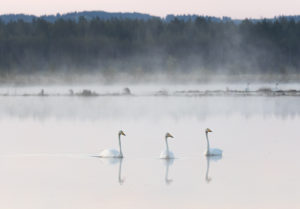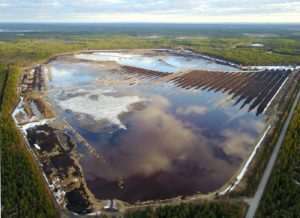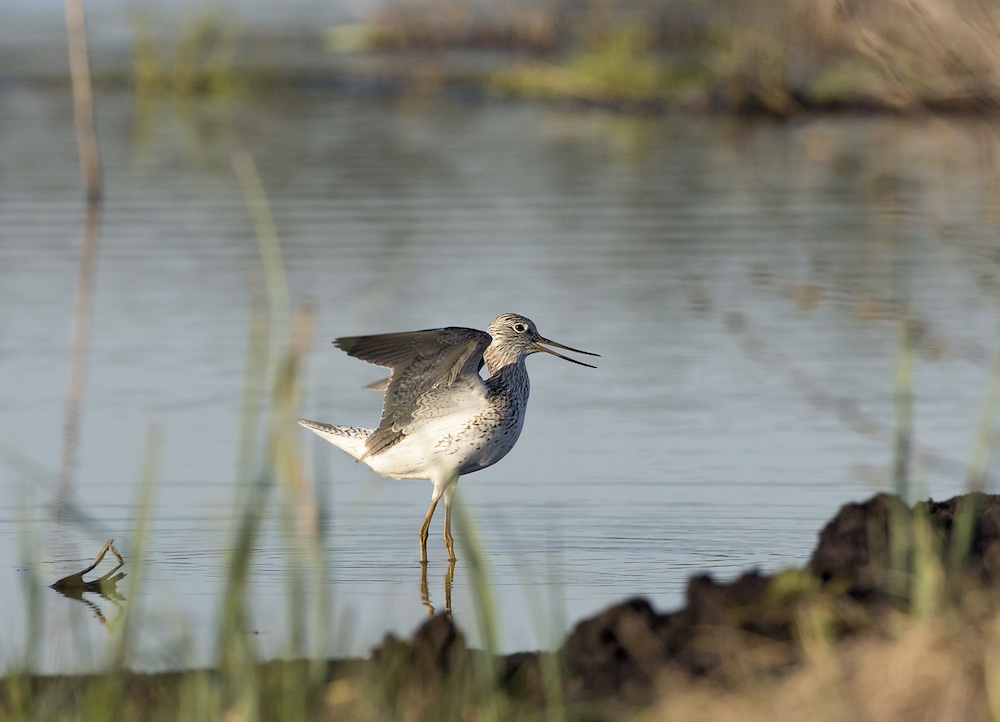First published on 06/14/2018, and last updated on 06/06/2023
Floods in Continental Europe and record-dry May in boreal Finland are some of the on-going examples of climate change events under way. Despite progress made with the Paris Agreement and other instruments, more is needed to combat climate change impacts.
On June 14th, Rewilding Europe, using funds from the European Investment Bank’s Natural Capital Finance Facility, and the Snowchange Cooperative of Finland, unveiled a transformative programme to restore biodiversity and create new carbon sinks across boreal Finland. This will be achieved by restoring degraded wetlands and bringing boreal forests back to health. Pilot sites are already operational and this “re-wilding” model has the potential to be replicated on as many as 5 million hectares of degraded lands in Finland. The initiative also includes steps to address biodiversity loss and re-wilding opportunities with the Sámi, the only Indigenous peoples of Europe. New business models are a part of the initiative.
An innovative model
Of all the countries in Europe, Finland has the highest potential for carbon

Summer swans on Linnunsuo wetland, North Karelia, Finland. Mika Honkalinna / Snowchange
sequestration in its natural forests, peatlands, and wetlands. With the urgent and growing global need to mitigate and offset carbon emissions and counter climate change, carbon credits could become an important tool for Finnish climate change policy, and for rural economic development. Restoration, or “re-wilding” of drained forests and peat bogs is an especially attractive strategy, as it addresses climate change with sustainable land-use models that support biodiversity, protect wildlife, and foster nature-based economies such as tourism. With support from the European Investment Bank’s Natural Capital Finance Facility, Rewilding Europe and Snowchange Cooperative have started their work to secure, restore, and protect Finland’s forests and wetlands using new forms of financing. Up to € 1.2 million is expected be allocated over the next five years to begin the project and expand it beyond the pilot stage. Moving into the 2020s, the initiative is expected to be scaled up to include thousands of hectares of restored wetlands and forests as carbon sinks.
First pilot projects
The ecological and socio-economic relevance of the re-wilding model will be tested in strategic locations chosen for their of high natural value. In 2017, the Linnunsuo area (110 ha) at the source of the wider Jukajoki basin (9,000 ha) was chosen as the first test case for this new approach. Encouraged by the preliminary results in this area, three new pilot sites will become operational in 2018, covering 209 hectares but with positive impacts on another 19,000 ha. The project is now refining its re-wilding processes and building income from carbon offsetting and other services. With the expected increase in the value of carbon credits (from January 2019 the aviation sector will be obliged to monitor and offset their carbon footprint), this project can be expected to expand rapidly and to attract funding from new investors. It is a model of sustainable development that shows respect for community- led restoration and includes the private sector.
Scaling-up potential

Linnunsuo wetland, May 2017. Janne Raassina / Snowchange
There are over 5 million hectares of drained peatland in Finland, a vast area that presents an unprecedented number of high natural value locations for re-wilding and restoring natural ecosystems and biodiversity. In these areas, carbon sequestration and other socio-economic activities, such aswildlife-viewing,, water-storage at the source, improving water quality and sustainable harvesting of natural products, have the potential to createnew jobs and skills, generating new tax revenues in the process.
Matthew McLuckie, Investment Manager of Rewilding Europe Capital and Timon Rutten, Head Enterprise commented,“Restoring and rewilding valuable peatlands creates benefits for all Europeans. This ambitious transformational project aims to connect ecosystems, businesses and communities in collaboration to protect these natural landscapes and their ecosystem services. Not only focusing on climate change mitigation, the project partners are working to ensure these peatlands positively contribute to local communities and economies and support Finland in exceeding their environmental goals and commitments.”
New Model to Further the Community-Conserved Areas and Support Sámi Indigenous Communities
“This initiative is important for the community networks that Snowchange Cooperative represents”, says Tero Mustonen from the Snowchange Cooperative. “It allows for the advancement of new types of conservation that are respectful and supportive of the Indigenous and Community Conserved Areas – ICCA approach and provide for the local economy as well. We look forwards expanding this initiative in Finland over the next years”, he concludes. Some key sites within Sápmi, the Indigenous Sámi homeland, have already been chosen, and will be restored using Sámi knowledge and science. This approach promotes both climate equity and benefits to Indigenous communities within Europe.
The original version of this article is accessible here, in Snowchange website.
